Overview
We assert that a thorough understanding of essential HTTP response GET codes is critical for every developer. Codes such as:
- 200 OK
- 404 Not Found
- 500 Internal Server Error
are not mere technicalities; they are foundational elements that can significantly impact user experience and operational efficiency. What challenges are your applications facing due to a lack of clarity in these responses? By mastering these codes, we can enhance our web application development and system integration processes, ensuring that we meet user expectations and operational goals effectively. We encourage you to delve deeper into these HTTP codes and recognize their value in your development toolkit.
Introduction
In today’s rapidly evolving landscape of digital integration, we recognize that understanding HTTP response codes is crucial for businesses striving to maintain seamless communication between their systems. Avato, as a leading hybrid integration platform, emerges as a game-changer, facilitating the secure connection of fragmented technologies while enhancing the reliability of these responses.
From the reassuring HTTP 200 OK to the frustrating HTTP 404 Not Found, each status code tells a story about the health of web applications and the effectiveness of integration strategies. As organizations increasingly rely on our platform to navigate the complexities of system integration, we cannot overstate the importance of managing these codes effectively.
This article delves into the significance of various HTTP response codes, showcasing how we empower businesses to optimize their operations and enhance user experience in an increasingly competitive environment.
Avato: Secure Hybrid Integration Platform for HTTP Response Codes
We stand at the forefront of hybrid integration platforms, revolutionizing how businesses connect their systems and data. Our emphasis on securely unifying fragmented technologies is essential for understanding HTTP response GET codes in contemporary web applications. By enabling smooth communication between different systems, we greatly improve the dependability of HTTP response GET, which is crucial for developers and organizations alike.
Response codes serve an essential function in system unification, with the 511 status code emphasizing the need for client authentication to reach network resources. This highlights the significance of strong unification solutions that can effectively manage HTTP response GET scenarios. Our platform not only streamlines the connection of isolated legacy systems but also offers real-time monitoring and alerts on system performance, ensuring that web responses are managed effectively, minimizing downtime and maximizing operational capabilities while significantly lowering expenses.
Real-world implementations demonstrate our effectiveness in improving the reliability of HTTP response GET. For example, Gustavo Estrada from BC Provincial Health Services Authority commended us for our capacity to handle intricate projects, stressing how we streamline procedures and produce outcomes within preferred timelines and financial limits. This testimonial showcases our dedication to helping organizations overcome connectivity obstacles effectively.
As hybrid connection platforms gain traction, the significance of response codes becomes increasingly clear. Organizations adopting our platform can expect enhanced system communication and improved reliability, positioning themselves to meet the evolving demands of their industries. Our creative strategy guarantees that companies can adjust and prosper in a competitive environment, making us an essential resource for IT managers in fields such as banking, healthcare, and government, where secure and dependable connectivity is crucial.
HTTP 200 OK: Successful Request Confirmation
The HTTP 200 OK status code is not just a technical detail; it is a critical indicator that we have successfully processed a request. For us as developers, the HTTP response GET is essential as it confirms the availability of the requested resource and its successful retrieval. In the realm of unification, particularly with our Avato platform, obtaining a 200 OK response is crucial for ensuring operational integrity and enhancing user satisfaction. Our platform supports 12 levels of interface maturity, enabling organizations to balance speed and sophistication in their connection processes.
Successful unifications that result in an HTTP response GET 200 OK signify effective communication between systems and reflect the robustness of our unification framework. Organizations leveraging Avato have reported significant improvements in their integration processes, with many achieving this status code consistently across their applications, thereby enhancing their digital transformation initiatives.
Statistics indicate that a high percentage of web applications successfully return 200 OK responses, underscoring the significance of this status in preserving operational efficiency. Our focus on HTTP response GET remains strong, as we acknowledge its role in validating successful request completions, which is essential for experience and system reliability.
Without a dependable method to verify successful interactions, developers encounter difficulties in observability and comprehending the quality of system connections. This reinforces the need for a disciplined approach to API management, especially as organizations strive to maximize their digital transformation efforts.
In summary, the 200 OK status code is a cornerstone of effective system integration, ensuring that businesses can operate smoothly and respond to client needs promptly. By leveraging our unique value proposition, including our 12 levels of interface maturity, organizations can enhance their operational capabilities, reduce costs, and improve customer satisfaction, maintaining a competitive edge in their respective industries.
HTTP 404 Not Found: Resource Unavailability Indicator
The HTTP 404 Not Found status code represents a significant challenge: it indicates that the server cannot locate the requested resource, often due to broken links or incorrect URLs. As developers, we recognize that efficiently managing 404 issues is essential for ensuring a seamless experience for our visitors. Did you know that nearly 40% of visitors abandon a website after encountering a 404 error? This statistic underscores the necessity for proactive strategies.
Implementing 301 redirects allows us to guide visitors to relevant pages, preserving SEO value and maintaining engagement. Moreover, personalized 404 pages present an opportunity to steer visitors back to valuable content, enhancing their experience even when resources are unavailable.
Optimal methods for addressing 404 issues involve:
- Clear communication on custom pages
- Providing search functionality
- Showcasing links to popular content
By adopting these strategies, we can significantly mitigate the negative impact of 404 errors on visitor engagement and overall site functionality. Our hybrid integration platform exemplifies how effective integration can simplify complex projects, ensuring that organizations can sustain operational capabilities even amidst resource unavailability. As noted by Gustavo Estrada, we are commended for our ability to deliver results within desired time frames and budget constraints. This reinforces the importance of employing effective strategies to maintain user engagement.
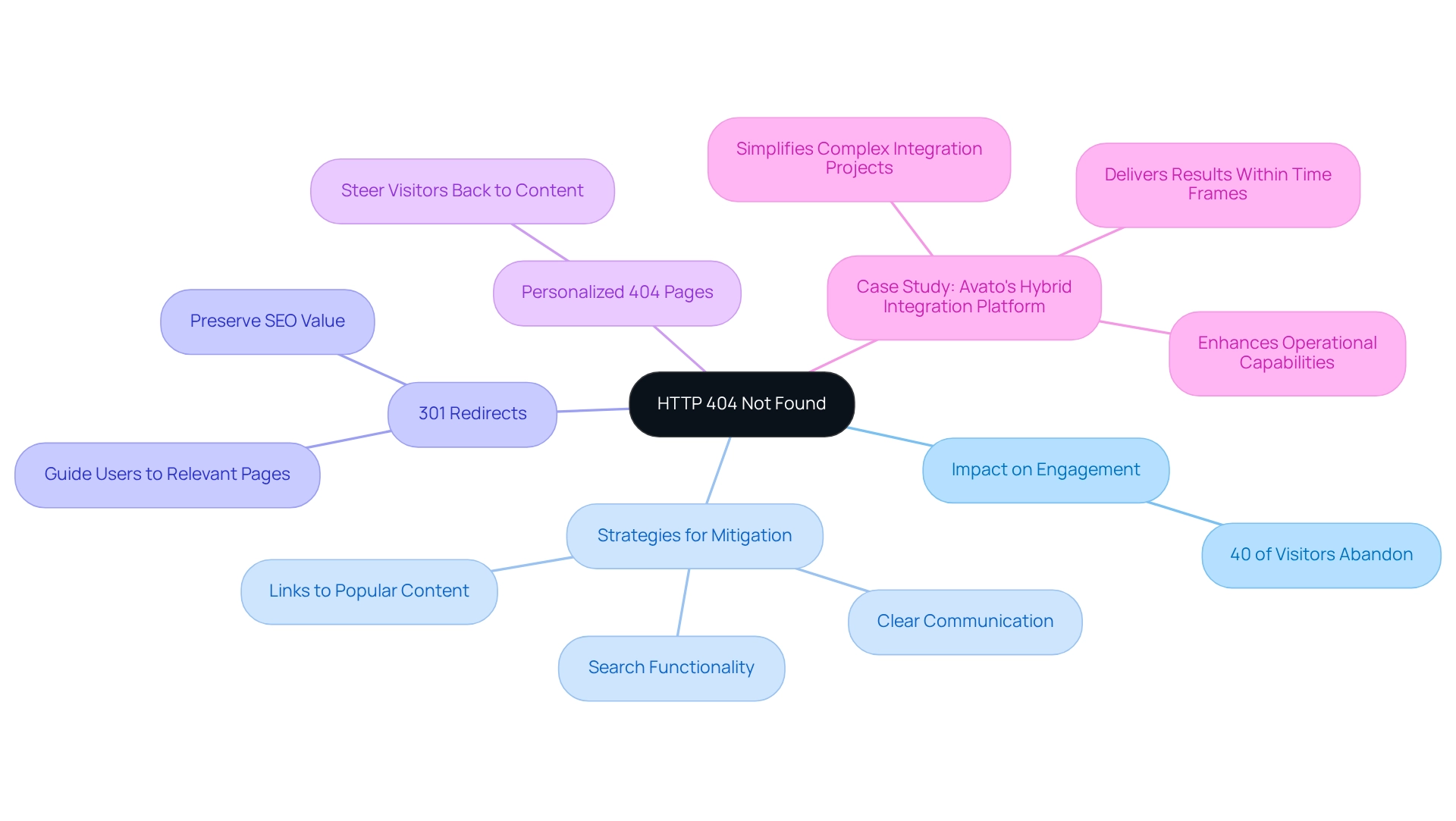
HTTP 500 Internal Server Error: Server-Side Issue Diagnosis
The HTTP 500 Internal Server Error is a significant indicator that the server has encountered an unexpected condition, hindering its ability to fulfill requests. This issue can arise from various factors, including server misconfigurations, application faults, or resource limitations. To effectively identify and address these challenges, we must implement robust logging and monitoring solutions. These tools not only help us recognize the fundamental causes of 500 issues but also assist in minimizing downtime, which can average several hours depending on the severity of the problem.
A proactive strategy for website maintenance can significantly reduce the frequency of 500 issues. For instance, by understanding common causes—such as unhandled exceptions in application code or server overload—we can address potential problems before they escalate. Recent case studies, like those discussed in ‘Understanding 5XX Server Issues,’ emphasize the effectiveness of comprehensive logging strategies in diagnosing HTTP 500 problems within enterprise systems. These insights demonstrate how organizations can swiftly identify issues and restore services.
Consistent monitoring is crucial for maintaining server health. As industry professionals note, the ability to track performance metrics and error logs in real-time enables quicker responses to server-side issues. This capability is particularly vital in sectors like banking and healthcare, where service reliability is paramount. By leveraging advanced logging and monitoring solutions, we can enhance our operational capabilities and ensure 24/7 uptime for critical integrations. Ultimately, this leads to improved user experiences and reduced operational costs. As Gustavo Estrada, a customer, stated, “Avato has simplified complex projects and delivered results within desired time frames and budget constraints.
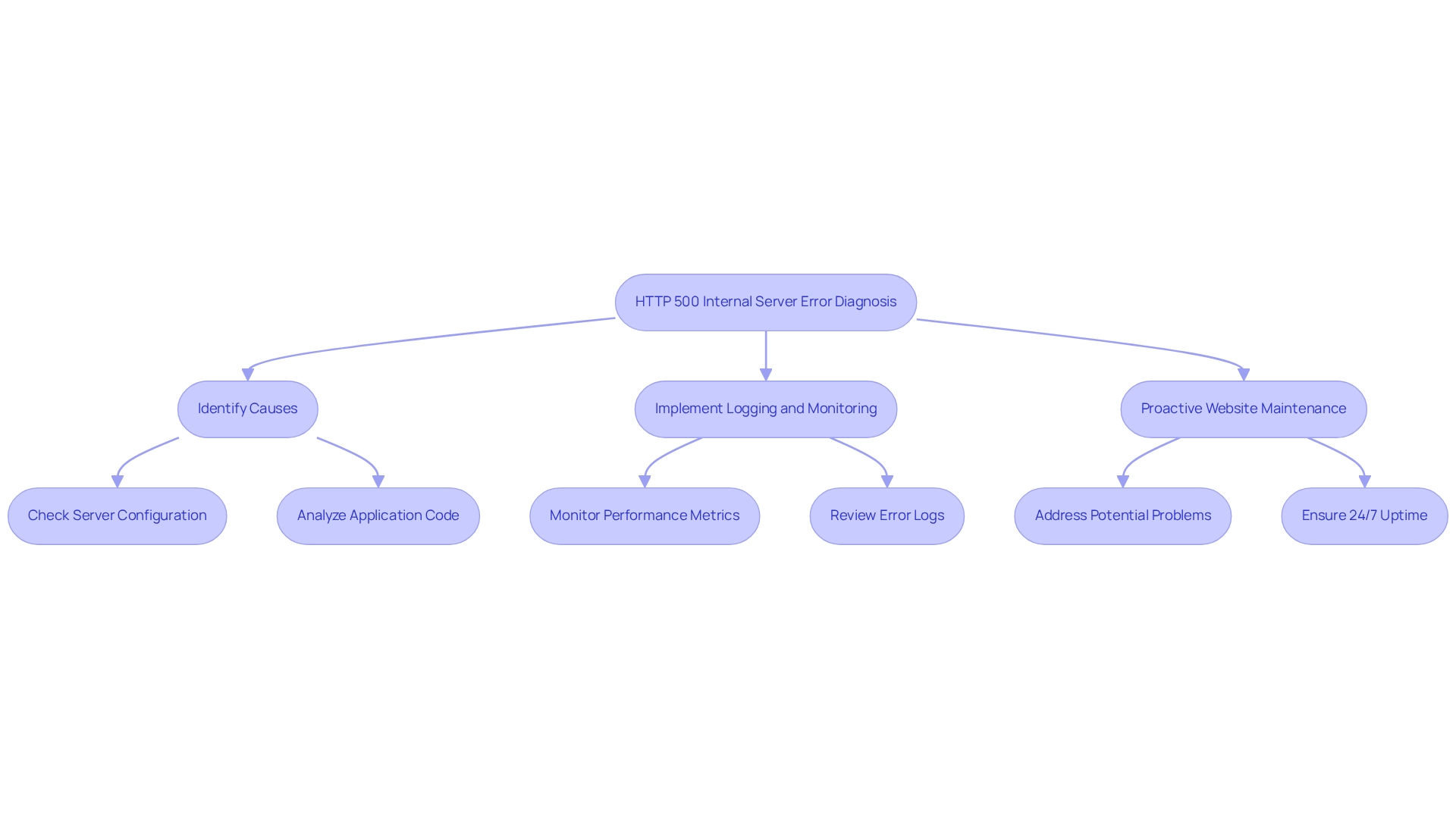
HTTP 403 Forbidden: Access Control and Permissions
The 403 Forbidden status code represents a significant challenge: the server understands the request but denies authorization. This issue often stems from inadequate permissions or access limitations. We must ensure that proper authentication and authorization mechanisms are in place to prevent unauthorized access, thereby enhancing the security of our integrated systems.
Statistics reveal that a considerable portion of web applications encounters 403 issues, underscoring the necessity for efficient access control measures. As we move into 2024, with stricter data protection regulations emerging globally, the importance of effective access control in web applications will only intensify.
Case studies demonstrate that organizations adeptly managing 403 Forbidden responses can substantially improve their security posture. For instance, companies that have implemented comprehensive access control measures report a marked decrease in unauthorized access incidents. This is particularly relevant in the context of remote work, where cybersecurity risks have escalated, highlighting the urgent need for robust access control.
Experts assert that the ramifications of 403 issues extend beyond mere inconvenience; they can expose vulnerabilities that malicious actors might exploit. Security specialists advocate for a proactive approach to access control, which not only mitigates 403 errors but also fortifies overall system security.
To address these risks, we must prioritize best practices for authentication and authorization in our integrations. This includes adopting multi-factor authentication and conducting regular reviews of access permissions. By implementing stringent access control measures, we can safeguard our systems against unauthorized access and ensure compliance with evolving data protection requirements.
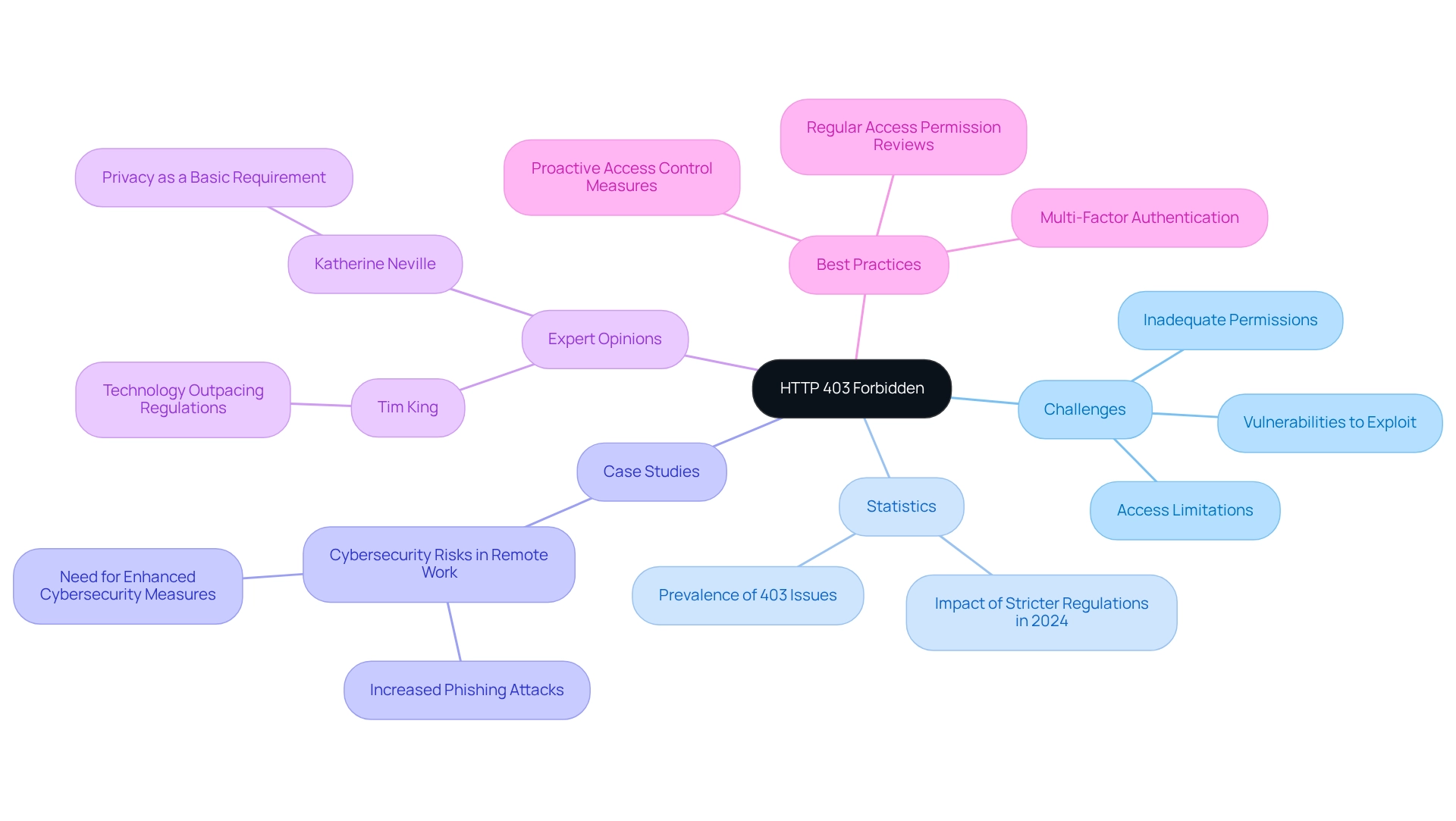
HTTP 301 Moved Permanently: URL Redirection Management
The HTTP 301 Moved Permanently status code is not just a technical detail; it is a crucial element in our SEO strategy. This response informs search engines to update their indexes, ensuring that our resources are correctly represented online. We must implement 301 redirects whenever we alter URLs to guarantee that both visitors and search engines are directed to the right locations, thereby preserving our traffic and search rankings. Failing to manage URL redirection effectively can result in significant traffic loss. As experts have noted, “If the redirect leads to content that is not a close match to the original, the page’s rankings for certain keywords might not recover, leading to a long-term decline in organic traffic.”
Studies indicate that websites lacking proper 301 redirects can experience an average traffic decline of up to 30%. Furthermore, having multiple 301 redirects, especially in chains, can exhaust a site’s crawl budget, adversely affecting its overall SEO performance. To manage URL redirection effectively, we should:
- Minimize the number of redirects.
- Ensure that the new URL closely aligns with the content of the original page.
- Regularly audit our redirects to maintain their relevance.
For instance, redirecting to a relevant page not only enhances the visitor experience but also helps us retain SEO value.
Case studies, such as those involving Avato’s Hybrid Integration Platform, illustrate the effectiveness of implementing HTTP 301 redirects and the role of http response get for SEO benefits. Businesses that have strategically managed their URL redirection have reported improved organic traffic and increased audience engagement. By prioritizing proper URL redirection management, we can significantly enhance our site’s SEO performance and user experience.
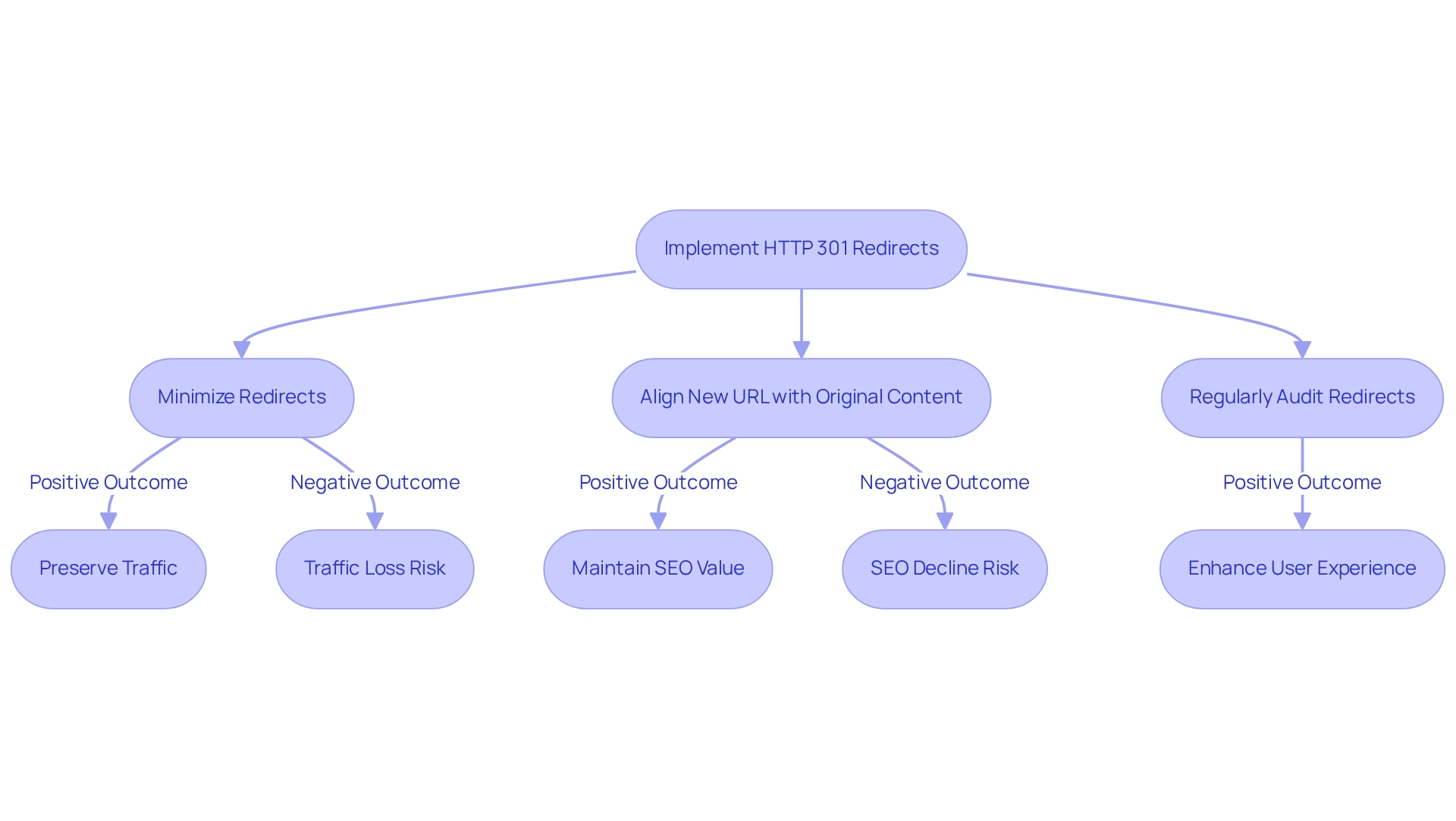
HTTP 400 Bad Request: Client-Side Error Identification
The HTTP 400 Bad Request status code signifies a critical issue: the server’s inability to process a request due to client-side errors, such as malformed syntax or invalid parameters. This problem is prevalent, with statistics revealing that a substantial portion of web traffic encounters this status, highlighting the urgent need for robust validation practices.
We must verify user inputs and ensure that requests are accurately formatted to mitigate this issue. By implementing client-side validation, we can significantly reduce the occurrence of 400 errors. As David Farley wisely noted, ‘The sooner you identify flaws, the less expensive they are to correct,’ underscoring the cost-effectiveness of early issue detection.
By prioritizing client-side validation, we enhance the reliability of our applications and align with best practices that promote smoother user interactions. Furthermore, organizations that have adopted comprehensive client-side validation strategies report a marked decrease in 400 errors, showcasing the positive impact of proactive measures. This adaptability is essential for maintaining a competitive edge in our industry.
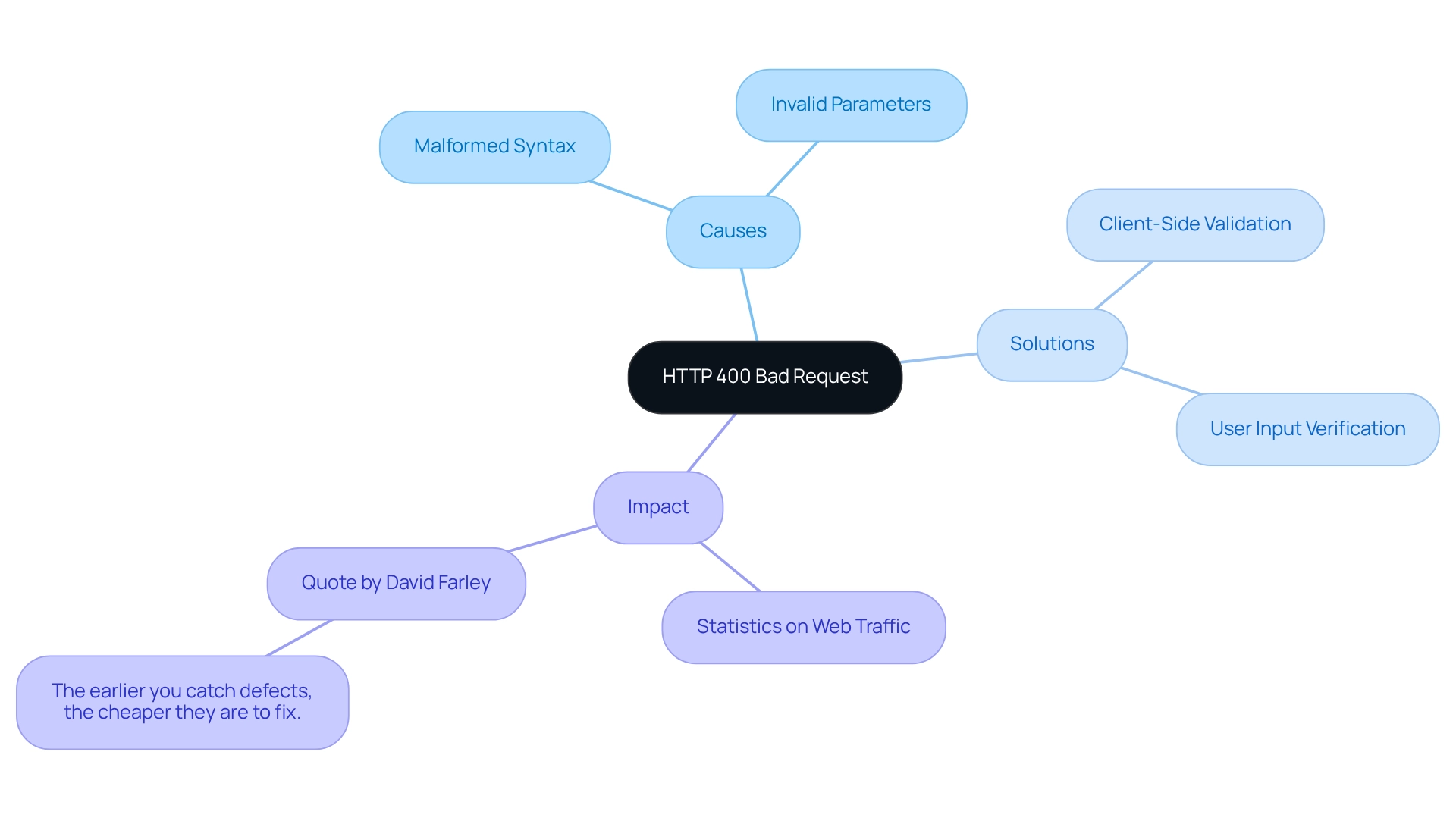
HTTP 401 Unauthorized: Authentication Mechanism Implementation
The HTTP 401 Unauthorized status code represents a critical issue that arises when requests lack valid authentication credentials. This error often surfaces when we attempt to access restricted resources without the necessary login, highlighting a significant vulnerability.
To safeguard sensitive data and functionalities, we must implement robust authentication mechanisms, such as:
- OAuth
- API keys
By doing so, we ensure that only authorized users can access our valuable resources. What steps are we taking to fortify our authentication processes? Let’s prioritize secure access to protect our data and enhance our operational integrity.

HTTP 408 Request Timeout: Network Issue Awareness
The HTTP 408 Request Timeout status code signals that we, as server operators, did not receive a complete request from the client within the expected timeframe. This issue often arises from slow network connections or server overload. To mitigate this, we must ensure our server is properly configured to handle incoming requests and respond promptly. We recommend optimizing server performance and implementing timeout settings, with research suggesting a request timeout of around 3000ms to accommodate occasional delays, thereby enhancing responsiveness and user experience.
Furthermore, we cannot overstate the impact of network performance on 408 issues. Network problems can lead to more frequent occurrences of this issue, underscoring the necessity for robust server configurations. It is vital that we educate our development and operations teams on performance enhancement techniques to prevent 408 issues. Empowered teams can write efficient code and configure servers for optimal performance, ultimately resulting in a more resilient web application.
Incorporating expert insights, we advocate for a mindset shift that prioritizes productivity over mere activity. This perspective is essential in preventing timeouts and ensuring seamless interactions. By concentrating on improving server efficiency and establishing strategic timeout configurations, we can significantly enhance user experiences and reduce the likelihood of 408 Request Timeout errors.
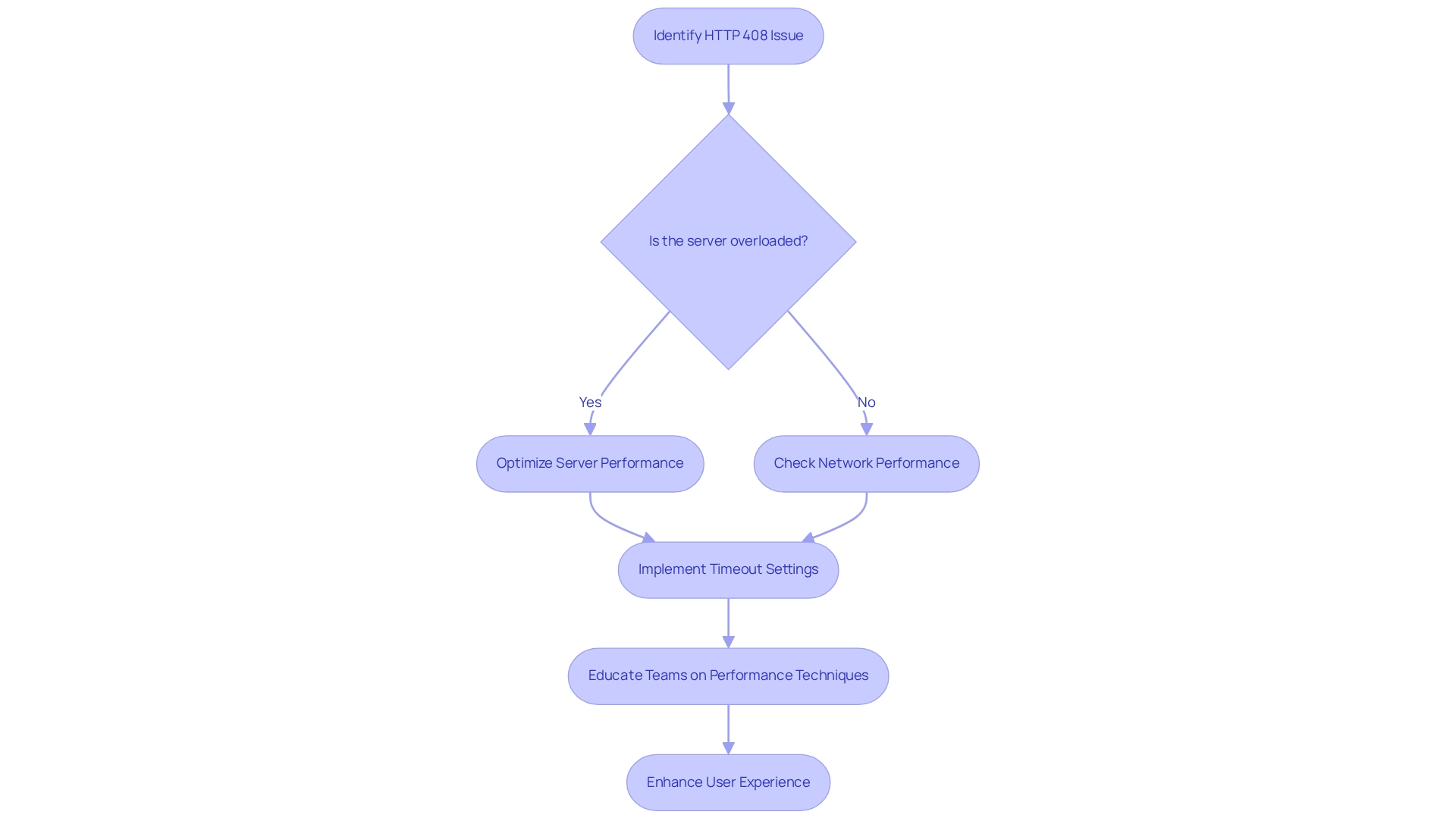
HTTP 429 Too Many Requests: Rate Limiting Management
The HTTP 429 Too Many Requests status code signifies that we have made excessive requests within a specified timeframe. This HTTP response is frequently utilized to impose rate limits on APIs, which are essential for preserving access, security, and safety in environments facing substantial traffic from authorized users. Such traffic can strain our server resources and hinder overall performance, making effective rate limiting strategies essential for preventing abuse and ensuring fair usage of resources.
We must implement rate limiting strategies to manage server load effectively. Including a ‘Retry-After’ header in our HTTP response can effectively guide users on when to retry their requests, enhancing user experience while also helping to manage server resources.
Statistics show that improper handling of rate limits can result in an increased number of HTTP response errors, disrupting service availability. To mitigate these issues, we should adopt comprehensive traffic management strategies that combine rate limiting with techniques such as caching, load balancing, and traffic shaping. A case study on managing API traffic demonstrated that integrating these methods significantly improved API performance and ensured high availability, allowing critical operations to be prioritized.
Best practices for API rate limiting involve regularly assessing usage patterns and employing dynamic limits based on real-time data. This proactive approach helps optimize performance, prevent abuse, and maintain fairness in resource allocation. As the landscape of API management evolves in 2025, we must stay informed about effective rate limiting strategies to navigate the complexities of modern API usage successfully.

Conclusion
Understanding and effectively managing HTTP response codes is vital for businesses like ours that aim to enhance digital operations and user experiences. The exploration of various status codes—from the reassuring HTTP 200 OK to the problematic HTTP 404 Not Found and beyond—highlights the critical role these codes play in system integration and operational efficiency. By leveraging Avato’s hybrid integration platform, we can ensure reliable communication between systems, thereby optimizing our integration processes and minimizing downtime.
The insights shared throughout this article illustrate the importance of implementing best practices for managing each HTTP response code. What proactive strategies can we employ? Whether it involves:
- Utilizing robust access control measures to address HTTP 403 errors
- Implementing secure authentication for HTTP 401 issues
- Optimizing server performance to prevent HTTP 408 request timeouts
These measures not only enhance user satisfaction but also fortify the security and reliability of our integrated systems in a rapidly evolving digital landscape.
In conclusion, as the complexities of system integration continue to grow, the significance of HTTP response codes cannot be overstated. By prioritizing effective management of these codes, we position ourselves for success, ensuring we meet the demands of our industries while maintaining a competitive edge. Embracing Avato’s platform not only simplifies integration challenges but also empowers us to thrive in an increasingly interconnected world.

